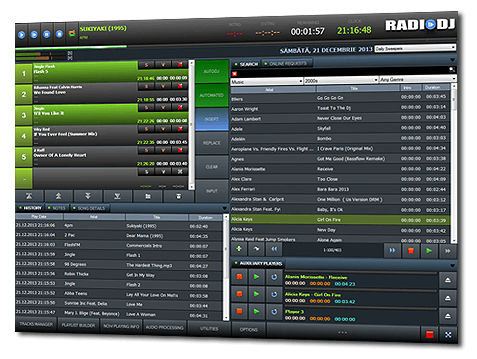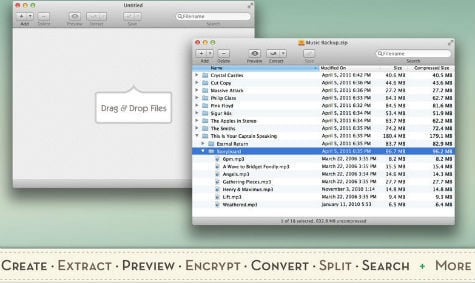- Free Encryption Software
- Mac File Encryption Software
- Mac File Encryption
- Best Laptop Encryption Software
- Encryption Software Mac Os X Freeware Games
FileVault 2 is a built-in encryption feature first introduced in OS X Lion. Unlike Microsoft's EFS, which encrypts via the file system, FileVault 2 turns your hard drive into an encrypted volume. If you're using FileVault in Mac OS X Snow Leopard, you can upgrade to FileVault 2 by upgrading to OS X Lion or later. After upgrading OS X, open FileVault preferences and follow the onscreen instructions to upgrade FileVault. RAID partitions or non-standard Boot Camp partitions on the startup drive might prevent OS X from installing a local. A kind of Tomb porting on Mac OS X. MacTomb is a free and open source system for file encryption on Mac OS X, facilitating the backup of secret files through encrypted storage containers. MacTomb shares most concepts with Tomb, that is, it can be considered its little brother. AES Crypt is available in both source and executable (binary) forms. The program is designed for operation on Windows (10, 8, 7, Vista, and XP), Linux, and Mac (Intel and PowerPC). To download, select the preferred package for the desired operating system or environment. Alternatively, you can clone code from the Git Repositories. #3 FileVault — the best disk encryption software for Mac. FileVault is a piece of Mac encryption software for users of Mac OS X 10.7 Lion or later. It is a method of using encryption with volumes on Mac computers. Encryption and decryption are performed on the fly.
AES Crypt is available in both source and executable (binary) forms.The program is designed for operation on Windows (10, 8, 7, Vista, and XP),Linux, and Mac (Intel and PowerPC). To download, select the preferred package for the desired operating systemor environment. Alternatively, you can clone code from theGit Repositories. NOTE: Downloading is prohibited under U.S. law for those in countrieslisted inTable E:1 or Table E:2 of Supplement 1 to CFR 740.By downloading, you attest that you are not located in one of those countries,which includes Cuba, Iran, North Korea, and Syria.
Please note that due to laws related to export restrictions on products thatuse AES, we are required to restrict downloads to certain countries. Further,you certify that, by downloading this software in source or binary form,you are not doing so from a country that is considered by the US FederalGovernmnet to be a terrorist-supporting country. The countries classifiedas such by the United Stated Federal Governmnet are presently Iran,North Korea, Sudan, and Syria (specified in Supplement 1 to 15 CFR Part 740). If you get an error message trying to download the file then it might bethat we could not identify your country by its IP address. Pleasecontact us if you have anyproblems so that we can update our databases. All files posted on this site are hashed and the hash file is signedusing GnuPG with KeyID 1672F2A5.Click here tosee the complete list of downloads and associated hash values.For more details, refer to the post in the support forums. | |||||||||||||||||||||||||||||||||||||||

Turn on and set up FileVault
FileVault 2 is available in OS X Lion or later. When FileVault is turned on, your Mac always requires that you log in with your account password.
Free Encryption Software
- Choose Apple menu () > System Preferences, then click Security & Privacy.
- Click the FileVault tab.
- Click , then enter an administrator name and password.
- Click Turn On FileVault.
If other users have accounts on your Mac, you might see a message that each user must type in their password before they will be able to unlock the disk. For each user, click the Enable User button and enter the user's password. User accounts that you add after turning on FileVault are automatically enabled.
Choose how you want to be able to unlock your disk and reset your password, in case you ever forget your password:
- If you're using OS X Yosemite or later, you can choose to use your iCloud account to unlock your disk and reset your password.*
- If you're using OS X Mavericks, you can choose to store a FileVault recovery key with Apple by providing the questions and answers to three security questions. Choose answers that you're sure to remember.*
- If you don't want to use iCloud FileVault recovery, you can create a local recovery key. Keep the letters and numbers of the key somewhere safe—other than on your encrypted startup disk.
If you lose both your account password and your FileVault recovery key, you won't be able to log in to your Mac or access the data on your startup disk.
Encryption occurs in the background as you use your Mac, and only while your Mac is awake and plugged in to AC power. You can check progress in the FileVault section of Security & Privacy preferences. Any new files that you create are automatically encrypted as they are saved to your startup disk.
When FileVault setup is complete and you restart your Mac, you will use your account password to unlock your disk and allow your Mac to finish starting up. FileVault requires that you log in every time your Mac starts up, and no account is permitted to log in automatically.

Reset your password or change your FileVault recovery key
If you forget your account password or it doesn't work, you might be able to reset your password.
Mac File Encryption Software
If you want to change the recovery key used to encrypt your startup disk, turn off FileVault in Security & Privacy preferences. You can then turn it on again to generate a new key and disable all older keys.
Turn off FileVault
If you no longer want to encrypt your startup disk, you can turn off FileVault:
- Choose Apple menu > System Preferences, then click Security & Privacy.
- Click the FileVault tab.
- Click , then enter an administrator name and password.
- Click Turn Off FileVault.
Mac File Encryption
Decryption occurs in the background as you use your Mac, and only while your Mac is awake and plugged in to AC power. You can check progress in the FileVault section of Security & Privacy preferences.
Best Laptop Encryption Software
Learn more
- Learn how to create and deploy a FileVault recovery key for Mac computers in your company, school, or other institution.
- If you're using FileVault in Mac OS X Snow Leopard, you can upgrade to FileVault 2 by upgrading to OS X Lion or later. After upgrading OS X, open FileVault preferences and follow the onscreen instructions to upgrade FileVault.
- RAID partitions or non-standard Boot Camp partitions on the startup drive might prevent OS X from installing a local Recovery System. Without a Recovery System, FileVault won't encrypt your startup drive. Learn more.
Encryption Software Mac Os X Freeware Games
* If you store your recovery key with Apple or your iCloud account, there's no guarantee that Apple will be able to give you the key if you lose or forget it. Not all languages and regions are serviced by AppleCare or iCloud, and not all AppleCare-serviced regions offer support in every language. If you set up your Mac for a language that AppleCare doesn't support, then turn on FileVault and store your key with Apple (OS X Mavericks only), your security questions and answers could be in a language that AppleCare doesn't support.